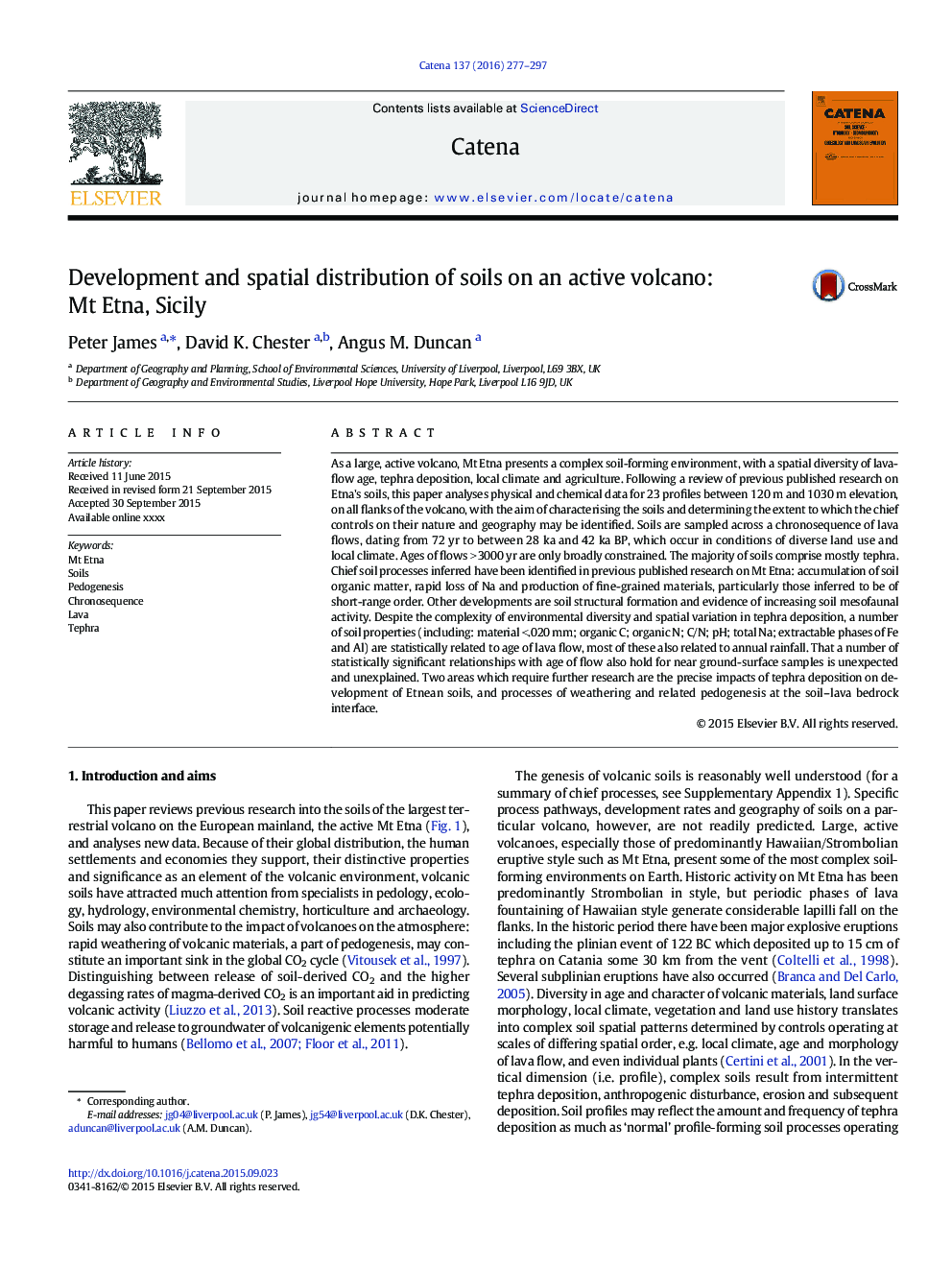| Article ID | Journal | Published Year | Pages | File Type |
|---|---|---|---|---|
| 6407970 | CATENA | 2016 | 21 Pages |
Abstract
As a large, active volcano, Mt Etna presents a complex soil-forming environment, with a spatial diversity of lava-flow age, tephra deposition, local climate and agriculture. Following a review of previous published research on Etna's soils, this paper analyses physical and chemical data for 23 profiles between 120Â m and 1030Â m elevation, on all flanks of the volcano, with the aim of characterising the soils and determining the extent to which the chief controls on their nature and geography may be identified. Soils are sampled across a chronosequence of lava flows, dating from 72Â yr to between 28Â ka and 42Â ka BP, which occur in conditions of diverse land use and local climate. Ages of flows >Â 3000Â yr are only broadly constrained. The majority of soils comprise mostly tephra. Chief soil processes inferred have been identified in previous published research on Mt Etna: accumulation of soil organic matter, rapid loss of Na and production of fine-grained materials, particularly those inferred to be of short-range order. Other developments are soil structural formation and evidence of increasing soil mesofaunal activity. Despite the complexity of environmental diversity and spatial variation in tephra deposition, a number of soil properties (including: material <.020Â mm; organic C; organic N; C/N; pH; total Na; extractable phases of Fe and Al) are statistically related to age of lava flow, most of these also related to annual rainfall. That a number of statistically significant relationships with age of flow also hold for near ground-surface samples is unexpected and unexplained. Two areas which require further research are the precise impacts of tephra deposition on development of Etnean soils, and processes of weathering and related pedogenesis at the soil-lava bedrock interface.
Related Topics
Physical Sciences and Engineering
Earth and Planetary Sciences
Earth-Surface Processes
Authors
Peter James, David K. Chester, Angus M. Duncan,
